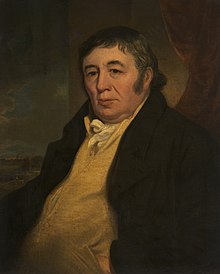Rothwell and Company
| General Partnership | |
| Industry |
Engineering Heavy industry |
| Predecessor | Smalley, Thwaites & Co. |
| Successor | Rothwell, Hick & Co. Rothwell & Co. Bolton Iron and Steel Co. Henry Bessemer & Co. |
| Founded | 1822 |
| Founder | Peter Rothwell |
| Defunct | 1864 |
| Headquarters | Union Foundry, Black Horse Street, Bolton, United Kingdom |
|
Key people
|
Benjamin Hick Peter Rothwell Jr. Benjamin Cubitt |
| Peter Rothwell Jr | |
|---|---|

by Unknown artist
|
|
| Born | 1793 |
| Died | 1849 |
| Nationality | British |
| Occupation | Civil and Mechanical engineer |
| Known for | Steam engines Locomotives Art collector |
Rothwell, Hick and Rothwell was an engineering company in Bolton, England. Set up in 1822, the partners became interested in the production of steam locomotives after the Rainhill Trials. The company's first engine was Union a vertical boiler 2-2-0 for the Bolton and Leigh Railway of which Hick was a promoter and one of the original shareholders, followed by three more locomotives the following year for American railways.
In 1832, Benjamin Hick left to set up his own business, B. Hick and Sons, to be replaced by Benjamin Cubitt, (younger brother of William Cubitt) from Fenton, Murray and Jackson. The firm then became Rothwell and Company. A further order for America was fulfilled in 1833, then for a couple of years the firm was occupied with pumps and stationary engines.
From 1836 steam locomotives became their main business. Up to 1840 they produced 56, 28 of which went abroad. Of note is a 4-2-0 for the South Carolina Railroad to the design of Horatio Allen. This had 4-foot-6-inch (1.37 m) drivers, with a swivelling front bogie, and reputed to have worked for 35 years. A deal of sub-contract work came from Edward Bury and Company.
From 1841, the company began a batch of engines for the broad gauge Great Western Railway. The largest order came in 1847 for 28 2-2-2 engines for the London and South Western Railway.
Possibly the most remarkable were some 4-2-4 T engines for the Bristol and Exeter Railway built in 1853/4 with 9-foot-diameter (2.7 m) unflanged driving wheels, and two ball-and-socket swivelled bogies. They weighed 42 tons and achieved speeds of 82 mph, the fastest engines of the time.
...
Wikipedia
